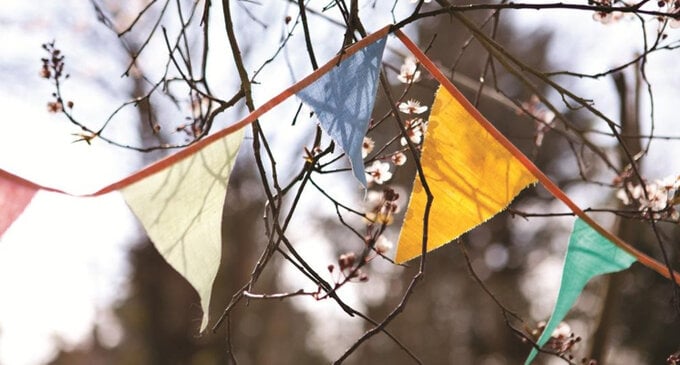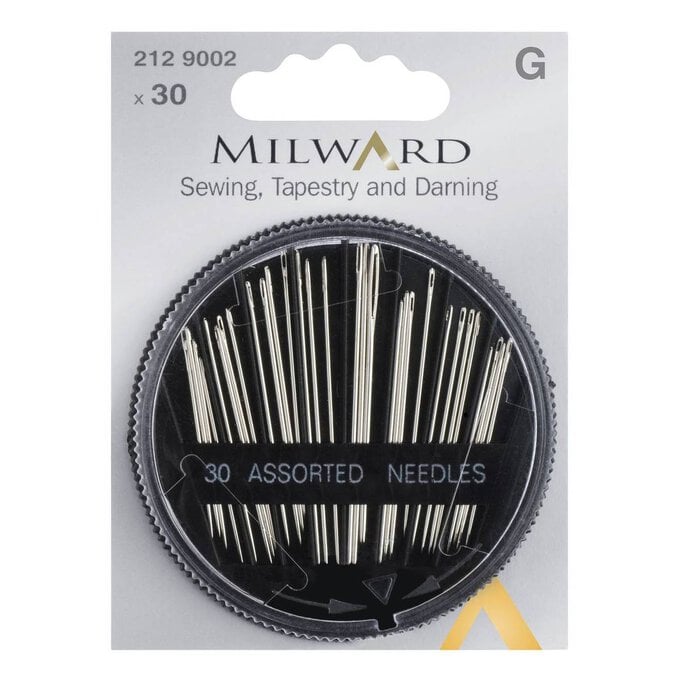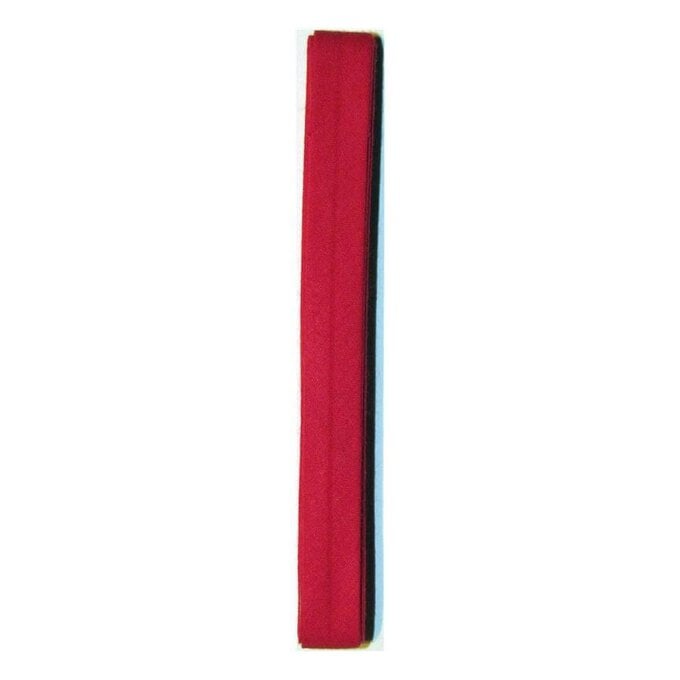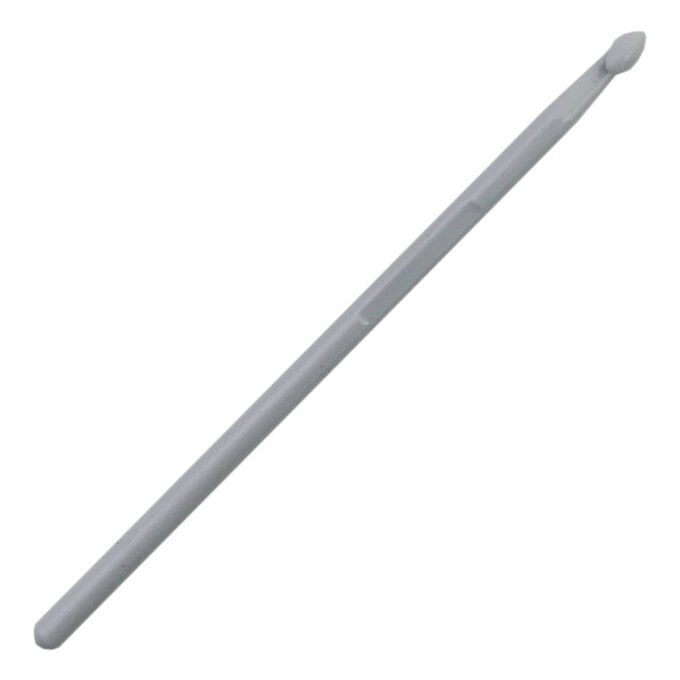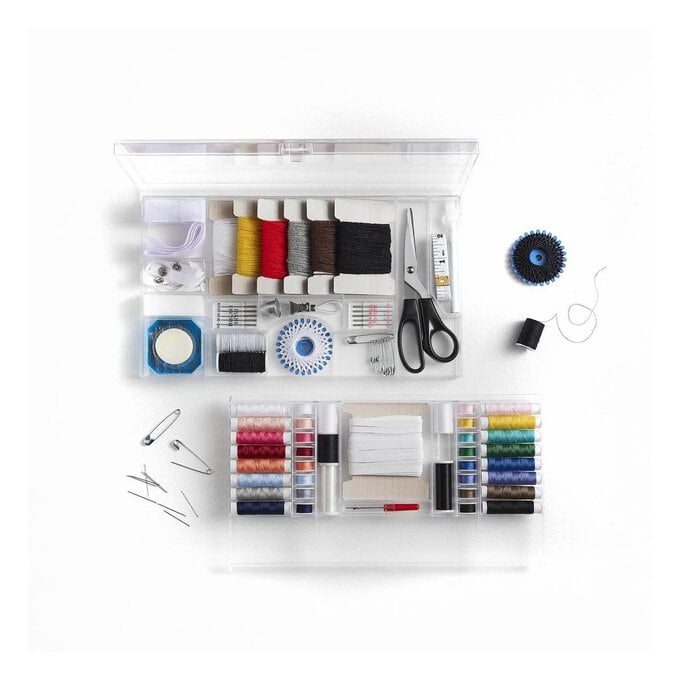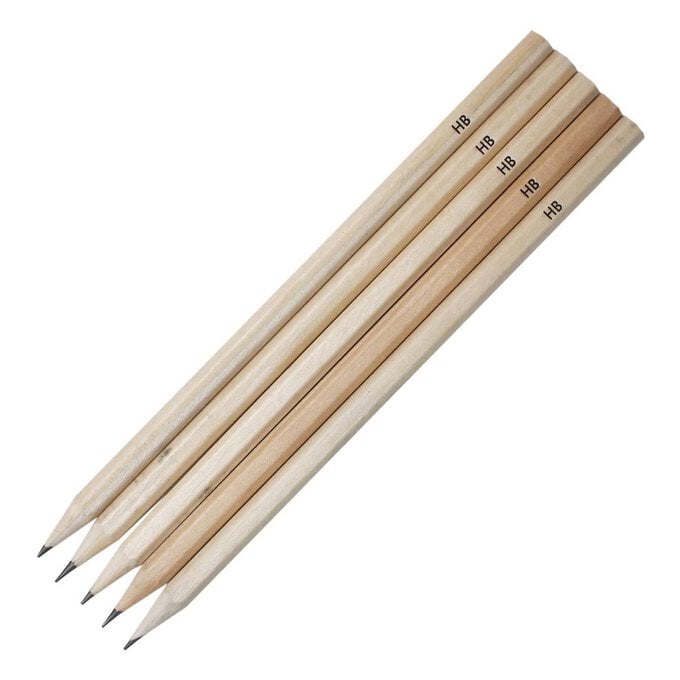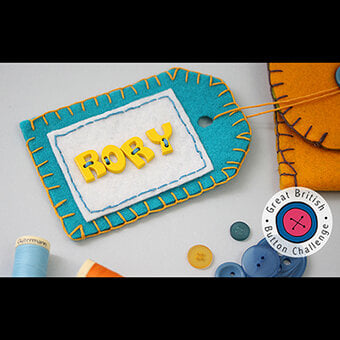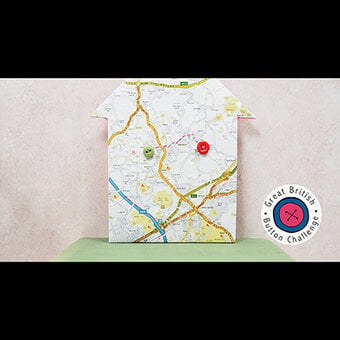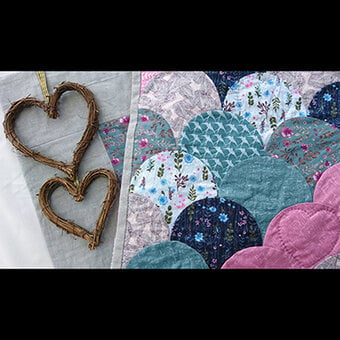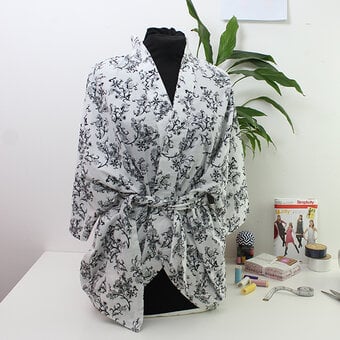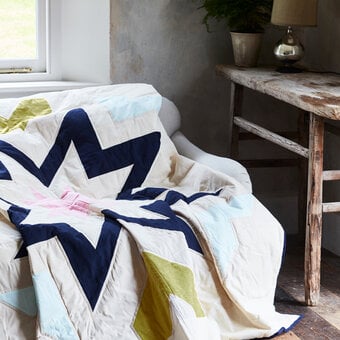How to Sew Bunting
With colourful homemade bunting you will always be ready for a celebration. Choose lightweight fabric that will flutter in the breeze and use this project to practice basic running stitch - it's really easy.
This bunting can be made in whatever print you like, why not mix and match for a colourful look? Follow along with the instructions below to find out how to make.
Project and instructions courtesy of How to Sew by Susie Johns published by GMC Publications
You will need
Subtotal
Is $ 5.49
Subtotal
Is $ 1.49
Subtotal
Is $ 3.49
Subtotal
Is $ 4.49
Subtotal
Is $ 27.00
Subtotal
Is $ 4.49
Subtotal
Is $ 7.49
How to make
You can make your bunting any length you like. Once made, the fabric pennants are 5 inches (13 centimetres) wide and are spaced 2 inches (5 centimetres) apart. To calculate how much tape you need for the number of pennants you have, allow 7 inches (18 centimetres) for each pennant plus at least 1 yard (90 centimetres) to give you enough free tape at each end for fastening.
Conversely, if you know what length you want your bunting to be – say, 16 feet (5 metres) to stretch across a room or between 2 trees – deduct 1 yard (90 centimetres) for the ends then divide the remaining length by 7 (18) to calculate how many pennants to cut. As a rough guide, you will need 11 pennants for a 10 foot (3 metre) length; 22 for a 16 foot (5 metre) length; and 61 for 39 foot (12 metre) length.
If you do not have scraps of material to use up, a piece of fabric measuring 12 x 39 inch (30 by 100 centimetres) will give you about 26 pennants, with careful cutting
Make a card template for the pennants, using the diagram. Place the card template on each piece of fabric in turn and draw round all three sides.

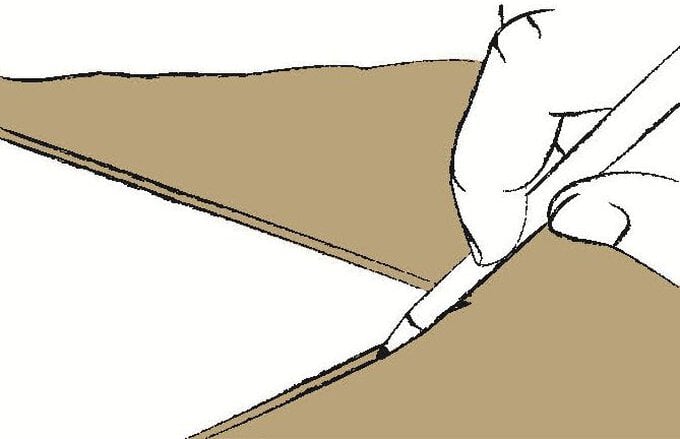
If your fabric scraps are big enough or if you are using one larger piece of fabric, move the template along and draw round it as before. Flip it as shown in the illustration, to reduce waste. As a guide, you will need 11 pennants for a 10 foot (3 metre) length – see Measuring above.
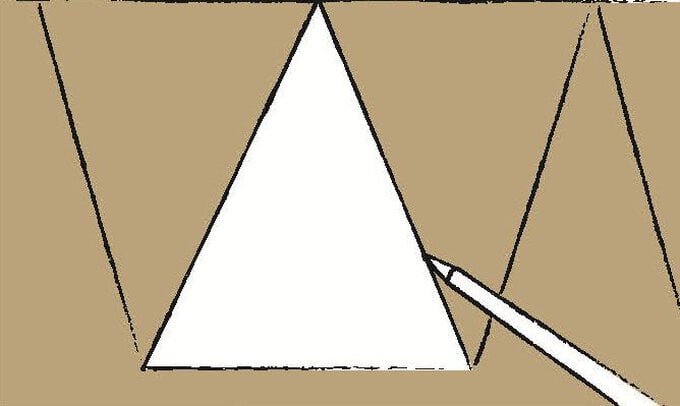
Cut along the lines you have drawn. By placing the template on two or more layers of fabric, you can cut out several pennants at a time – pinning the layers of fabric together will make this easier.
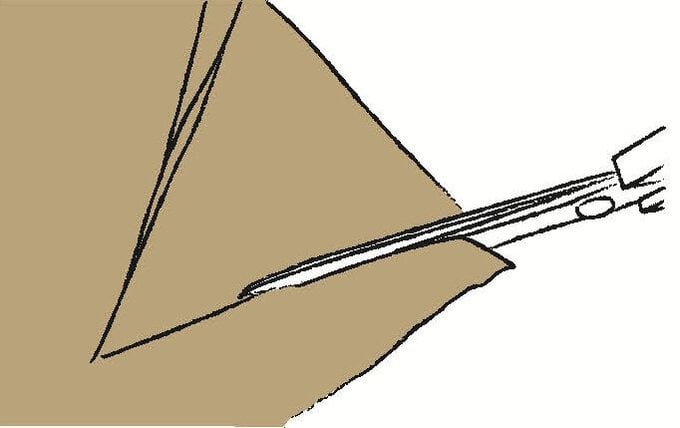
Position the first pennant at least 18 inches (45 centimetres) from one end of the tape (or more if you want longer ties at each end). Thread a sewing needle and, with the top (short) edge of the triangle along the centre of the tape, baste the pennant in place, using a long running stitch.
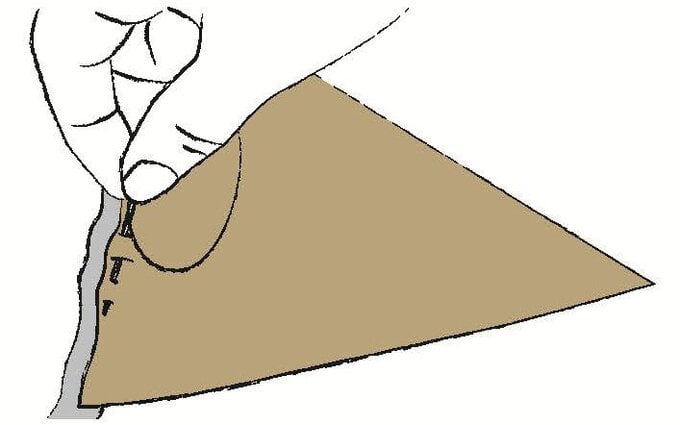
Position the second pennant 2 inches (5 centimetres) from the first and baste as before. Repeat along the length of the tape, leaving the same amount of tape free at both ends.
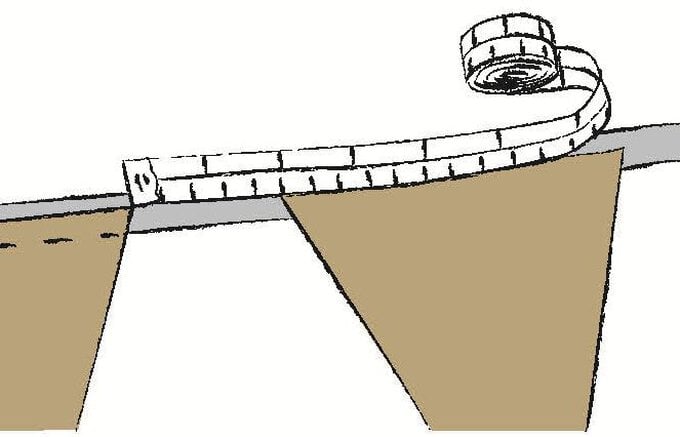
Starting at one end, fold over the tape so that the long edges are aligned and stitch together with neat running stitch (shorter than in step 4).
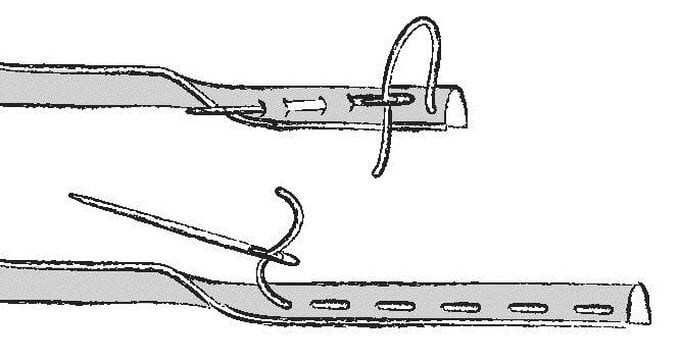
Fold over the tape to enclose the top of each pennant in turn, stitching through all three layers. Continue stitching along the free end of the tape. Once all the pennants have been securely stitched in place, remove the basting thread from the top of each one.
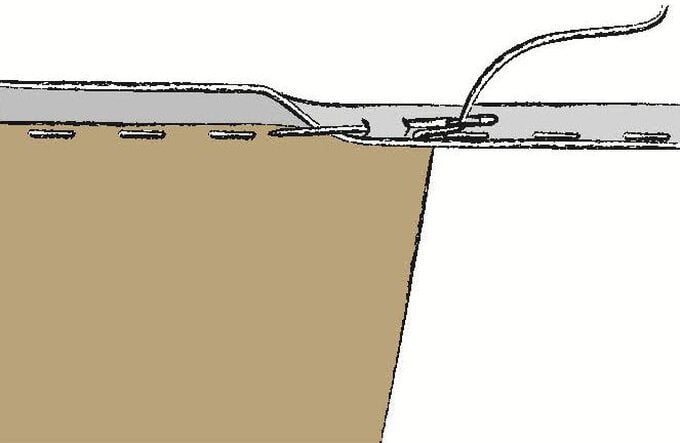
Fold over each end of the tape to form a loop, and stitch in place. If you wish, you can loop the tape through a plastic, wooden or metal ring before stitching.
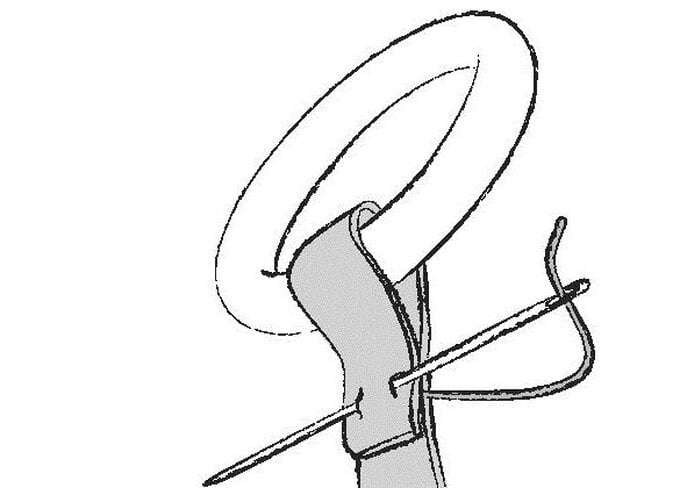
Bring the needle out to the right side of the work. Push the needle in and out of the fabric. Repeat at regular intervals, aiming to make each stitch and each gap between stitches the same length. For basting or 'tacking' ( which is used to keep two pieces of fabric together when pins would get in the way), the stitches and gaps should be about half an inch (1.2 centimetres) long; for gathering, make them slightly smaller.
